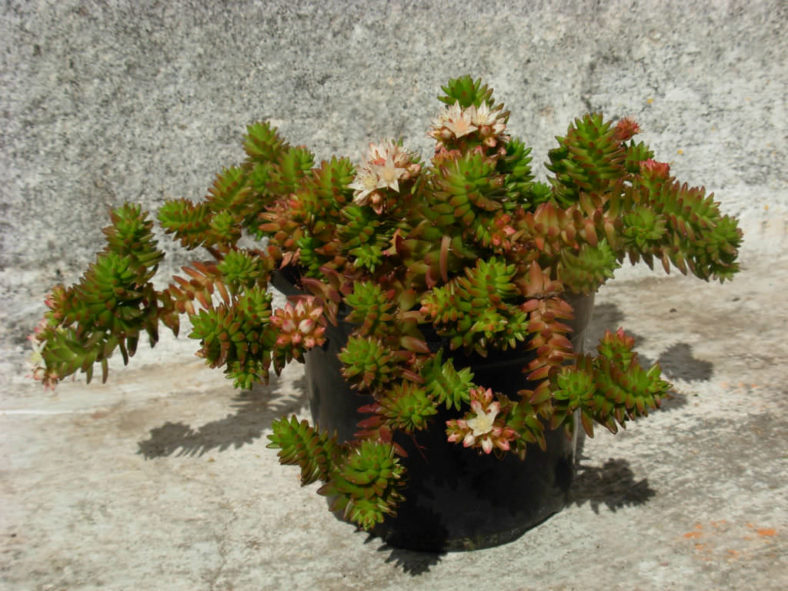Scientific Name
Sedum goldmanii (Rose) Moran
Synonym(s)
Altamiranoa goldmanii, Villadia batesii, Villadia goldmanii
Scientific Classification
Family: Crassulaceae
Subfamily: Sempervivoideae
Tribe: Sedeae
Genus: Sedum
Etymology
The specific epithet "goldmanii" (pronounced "gold-MAH-nee-eye") honors Edward Alphonso Goldman (1873-1946), an American field naturalist and taxonomist.
Origin
Sedum goldmanii is native to Mexico.
Description
Sedum goldmanii, also known as Villadia batesii, is a succulent plant with erect or prostrate stems that bear green or reddish leaves, often glaucous at first. It branches from the base, and the stems die to the base after flowering or the lower parts persisting after flowering and become woody and branch with gray bark. The stems are reddish, glossy, with pale yellow leaf scars, and can grow up to 12 inches (30 cm) long and up to 0.2 inches (0.5 cm) in diameter. The leaves are linear to oblong, measuring up to 0.6 inches (1.5 cm) in length and 0.15 inches (0.4 cm) in diameter.
The flowers are white or reddish, star-shaped, and appear in clusters on erect or sometimes decumbent stems in fall and winter.

How to Grow and Care for Sedum goldmanii
Light: This succulent grows best in locations where it will enjoy the full sun for at least six hours daily. It will tolerate partial shade but will not thrive in deep shade. Keep your indoor plant in a sunny window or under artificial lights.
Soil: S. goldmanii does not like to sit in waterlogged soil, so drainage is essential to prevent root rot. Choose a well-draining soil mix.
Temperature: This plant is tolerant of heat and freezing temperatures. S. goldmanii can withstand temperatures as low as 25°F (-3.9°C). USDA Plant Hardiness Zones 9b to 11b, 25°F to 50°F (-3.9°C to 10°C).
Watering: From spring through fall, water thoroughly and wait for the soil to dry out before watering again. In winter, water your plant just enough to keep it from shriveling. Avoid wetting the leaves, stems, and flowers when watering.
Fertilizing: Feed with a balanced organic fertilizer in spring. Feeding is unnecessary as long as the plant is divided annually and provided with fresh soil.
Repotting: Repot your plant when it outgrows its current pot by moving it to a larger container that will hold the plant better. Spring is the best time to repot S. goldmanii. Make sure the soil is dry before you begin repotting.
Propagation: Once you have one S. goldmanii, it is easy to make more by taking stem cuttings and dividing the plant. It is also easy to grow from seed. Take cuttings in spring when the plant is in active growth. Once it has finished flowering, it is the right time for division. Spring or summer is the best time to sow the seeds.
Learn more at How to Grow and Care for Sedum.
Toxicity of Sedum goldmanii
S. goldmanii is not listed as toxic for people, but can be mildly toxic to pets and children.
Links
- Back to genus Sedum
- Succupedia: Browse succulents by Scientific Name, Common Name, Genus, Family, USDA Hardiness Zone, Origin, or cacti by Genus
Photo Gallery
Click on a photo to see a larger version.


